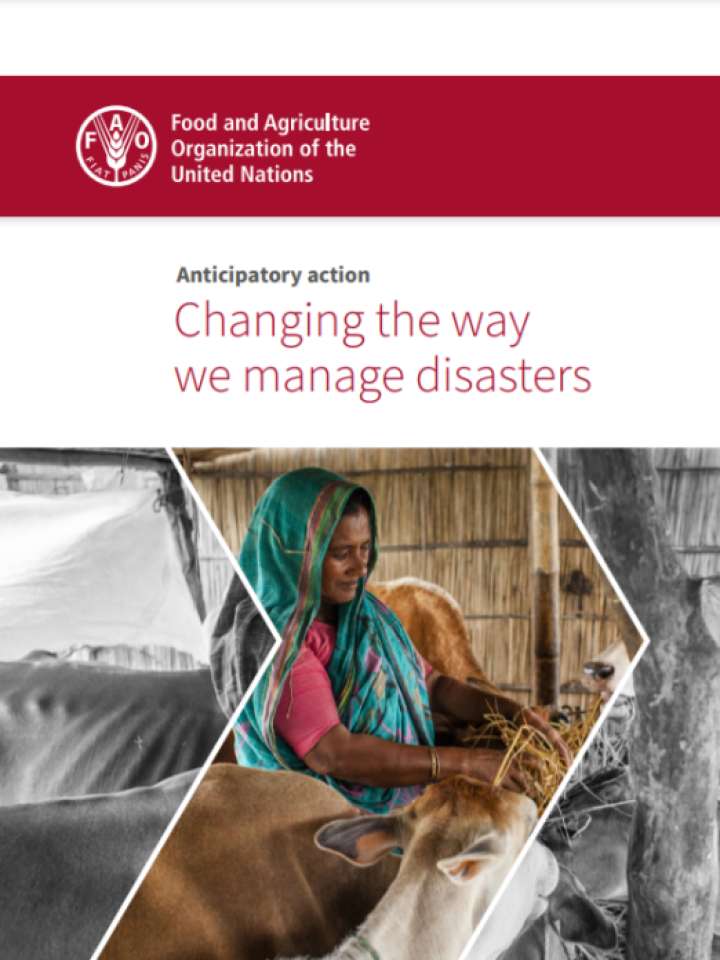Anticipatory action: Changing the way we manage disasters
This brochure outlines in direct, non-technical language what anticipatory action is, how it works and why it makes a difference in the lives of people who are staring in the face of crises, be they caused by natural hazards, conflict or a mix of environmental and human factors. Anticipatory action is a growing area of disaster management that relies on data analysis to predict where crises might strike and act ahead of time. The Food and Agriculture Organization of the United Nations (FAO) has been playing a vanguard role in bringing this kind of early, protective interventions into the mainstream of humanitarian programming.
This document identifies five key ingredients of an anticipatory action system. Firstly, crisis timelines that highlight when and how hazards have impacted people in the past. That makes them valuable tools to analyse the evolution of a hazard and how it might impact people’s livelihoods in the future. Secondly, early warning systems. They are the cornerstone of any anticipatory action system. They allow FAO and its partners to monitor and clearly communicate early signs of a growing hazard and predict when shocks will happen and where. Thirdly, anticipatory actions themselves. These actions are as diverse as the contexts and situations they respond to. But one thing they share is the need for flexibility: actions designed to protect the productive assets of farmers, herders and fishers have to be adjustable in case the context changes. Fourthly is flexible financing, allowing FAO to meet the window before disaster impacts communities and roll out context-appropriate actions before a shock can turn into a crisis. Finally, evidence that shows that the value of interventions go beyond the monetary realm. Speaking to individuals, community leaders and government partners, FAO has also found that these interventions can curb food insecurity, support resilience efforts and provide a more dignified way of approaching humanitarian aid.
Explore further
